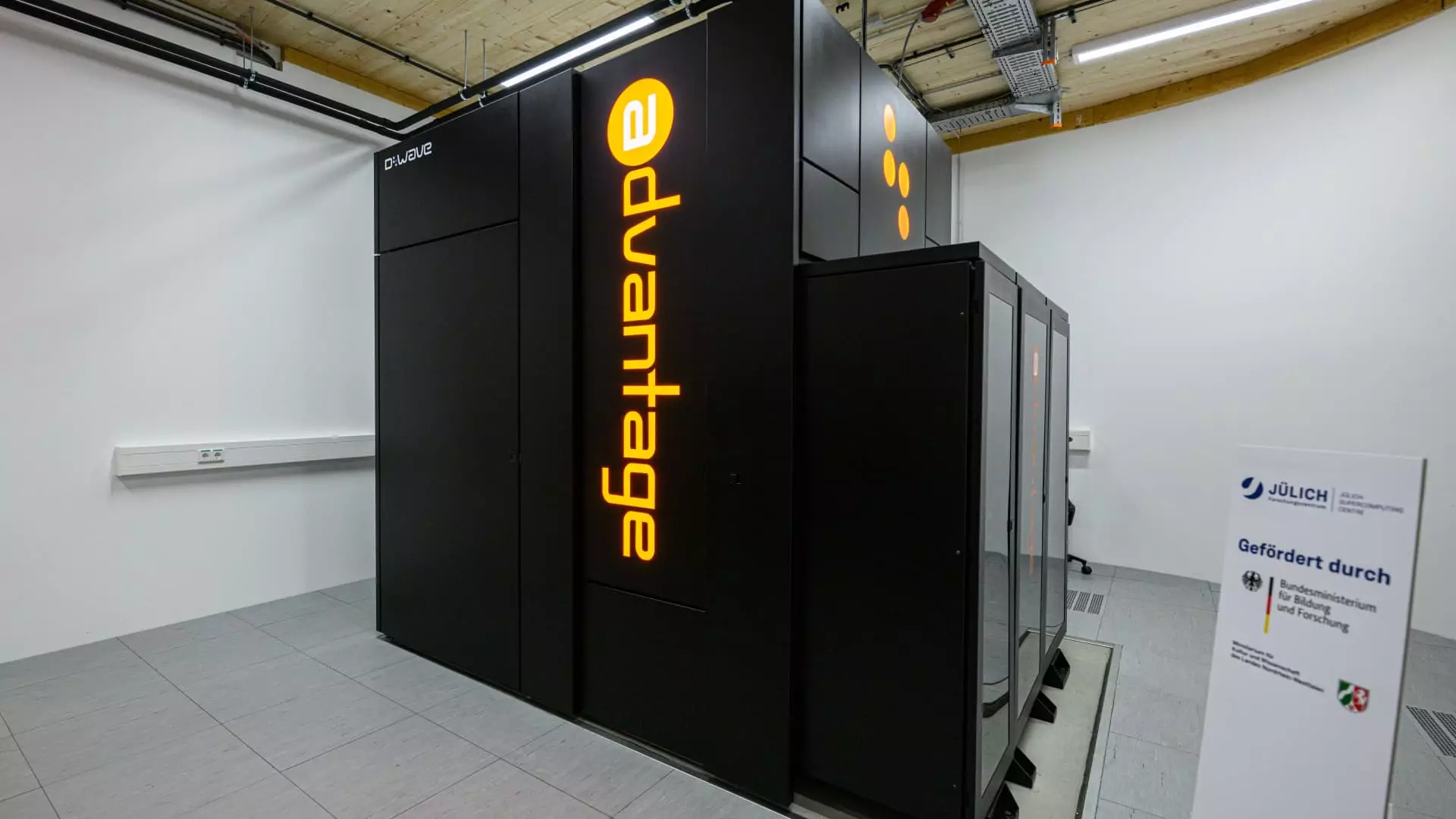In an era dominated by rapid technological advancements, D-Wave Quantum’s recent stock surge of over 26% after introducing its latest computing system, Advantage2, cannot be understated. This leap not only symbolizes investor confidence but also reinforces the burgeoning importance of quantum computing in driving innovation across industries. The implications of D-Wave’s announcement extend beyond just numbers on a stock chart—they hint at a competitive future where speed and efficiency are paramount. As central banks and corporations alike navigate an increasingly uncertain economic environment, boosting productivity through groundbreaking technological solutions may well be one of the critical options available.
However, one must approach such optimism with caution. The quantum computing sector has historically been bogged down by overhyped promises and ambiguous returns. If D-Wave falters in delivering on its new system’s capabilities, customers and investors could quickly lose faith, reversing the positive sentiment fueling this surge. As exciting as this field may be, it’s crucial not to disregard the inherent risks that accompany such pioneering technologies.
Agilysys: Leading the Charge in Hospitality Software
Another remarkable milestone is Agilysys, which experienced a vigorous rally of 21% after surpassing analysts’ expectations for its fiscal fourth-quarter earnings. With adjusted EBITDA soaring to $14.8 million—comfortably above the predicted $11.3 million—it’s apparent that savvy management and a deep understanding of market needs have positioned Agilysys to capitalize on the rebounding hospitality industry.
However, while these impressive figures are commendable, there is a significant discussion to be had about sustainability. As travel and tourism begin to show signs of recovery, will Agilysys continue to evolve? Its future growth depends on its ability to innovate in an industry marred by intense competition and rapidly shifting consumer preferences. Consequently, potential investors must gauge whether this spike in stock price represents a fleeting moment of excitement or the beginning of a sustained growth trajectory.
Amer Sports’ Resilience Amidst Market Turbulence
With a 17% surge following its impressive first-quarter earnings, Amer Sports is another company capturing attention. Their ability to achieve 27 cents per share, comfortably besting the anticipated 15 cents, highlights a robust business model. Furthermore, Amer’s foresight in navigating the complexities of tariffs and its adept management of pricing power reflect a company well-placed within its competitive landscape.
Yet, this optimism invites scrutiny. Market volatility does present challenges, and fierce competition in the sportswear sector makes sustainability uncertain. The company’s ability to maintain its growth through.
its full-year guidance will depend critically on how adeptly it can manage external pressures such as logistics, material costs, and shifting consumer preferences in a post-pandemic world.
The Vaccine Giants: Are They Pivoting Towards A New Normal?
The news that Moderna jumped over 9% after the FDA outlined new regulatory guidance regarding Covid-19 vaccine boosters significantly impacts not only the pharmaceutical industry but the overall market landscape. The implications for both Moderna and Pfizer, which rose nearly 2%, cannot be overstated. These firms are not just dealing with the healthcare landscape, they are shaping the future of medical practice.
However, the question is whether the current valuation reflects their long-term viability, especially given the challenges associated with vaccine development and public sentiment surrounding ongoing vaccination efforts. Investors must remain cautious: the trajectory of these stocks could change with evolving data or unforeseen public health developments.
Viking Holdings: A Cautionary Tale Amidst Recovery
On a less buoyant note, Viking Holdings dropped 5% after hinting at slower pricing growth for future bookings, despite reporting solid first-quarter numbers. This serves as a reminder of the pressures that still linger within the cruise industry’s recovery narrative. Positive earnings do not automatically translate to secure investments if future performance indicators signal potential downturns.
As the market continues to fluctuate, the example set forth by Viking illustrates a heightened need for adaptable strategies in a landscape still scarred by the pandemic. The reality is that consumer confidence in travel needs fostering, yet challenges remain evident.
Schrodinger and the Fragility of Predictions
In stark contrast to its peers, Schrodinger saw a 9% decline after its CFO announced his departure. This volatility reinforces the notion that investor sentiment can drastically sway based on seemingly unrelated leadership changes. In the world of business, a change in leadership could either catalyze a new vision or reveal underlying issues that may be volatile to investors.
The importance of strong leadership cannot be overstated, and a sudden shake-up raises questions about the company’s future plans and continuity. Investors should weigh the stability of companies carefully, especially when they face such existential crises from their leadership.
The current stock market is alive with dynamic players, each echoing sentiments about resilience and adaptability. The balance between optimism and caution must be carefully navigated as we observe the wider implications of these movements across various sectors in an ever-evolving economic landscape.

